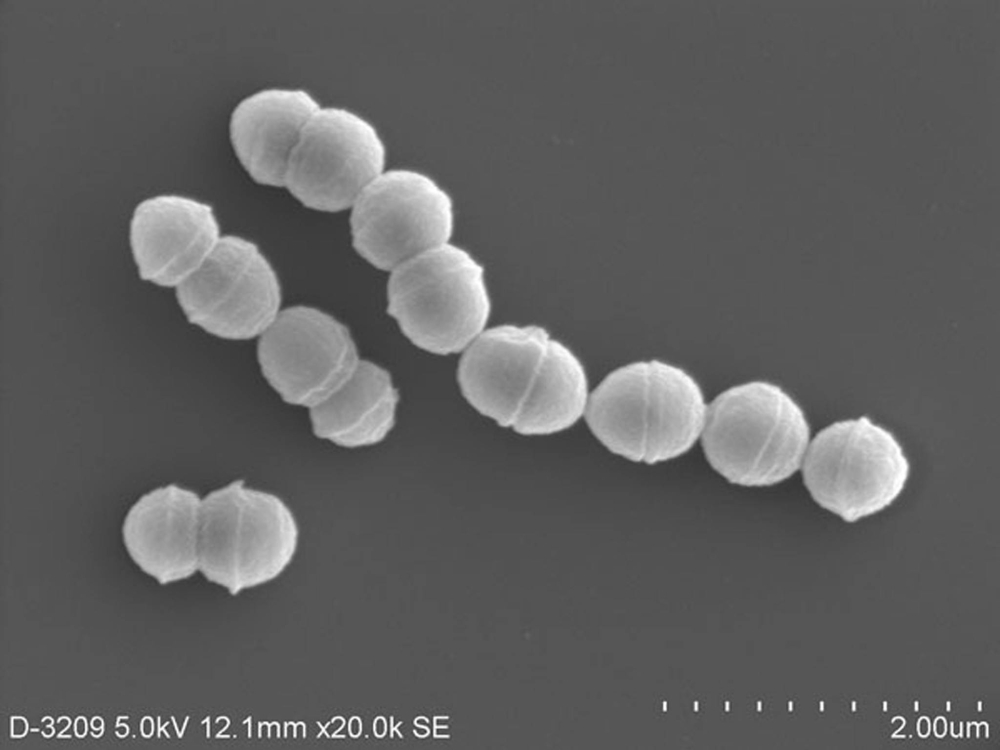- cross-posted to:
- world@lemmy.world
- cross-posted to:
- world@lemmy.world
A disease caused by a rare tissue-damaging bacteria is spreading in Japan after the country relaxed COVID-era restrictions.
Cases of streptococcal toxic shock syndrome (STSS) reached 977 this year by June 2, higher than the record 941 cases reported for all of last year, according to the National Institute of Infectious Diseases, which has been tracking incidences of the disease since 1999.
At the current rate of infections, the number of cases in Japan could reach 2,500 this year, with a mortality rate of 30%,” said Ken Kikuchi, a professor of infectious diseases at Tokyo Women’s Medical University.
"Most of the deaths happen within 48 hours,” Kikuchi said. "As soon as a patient notices swelling in (their) foot in the morning, it can expand to the knee by noon, and they can die within 48 hours.”
I guess they’re linking it to easing COVID restrictions because hand washing helps prevent it. Did people stop washing their hands after using the toilet in Japan once the restrictions let up?
Did people stop washing their hands after using the toilet in Japan once the restrictions let up?
Did…they start?
Having lived briefly in Japan and for a while in Korea, most people left public (and workplace) washrooms without washing their hands. Even during the pandemic.
That’s hilarious for a country with very ingrained bathhouse culture.
deleted by creator
You’re fucking joking. I give people the side-eye when they do that here in the U.S. and there are still plenty of people that at least go through the trouble of rinsing off their hands. Sure, most people don’t make sure to really get the soap everywhere like I do, but for most people to do absolutely nothing…
How is hand washing not an emoji?
💦👏🧴👏💦 damn. That’s really the closest you can get
A hand holding soap bubbles. How cute would that be?
Yeah, applaud to the water. Hydrohomies. :)
Can confirm as someone who lives in Japan. It’s an oft-dis used thing in foreigner groups when the new arrivals show up and notice
deleted by creator
This one’s kind of funny to me. I lived for two years in Japan not knowing that men’s restrooms typically don’t even have soap. Women’s restrooms usually do, and they get used. Despite me having lived there, it was my husband who taught me that there is no soap in the men’s restrooms when we went on a visit.
That was the weirdest part to me. In Korea, there was usually soap in the washrooms. But in either of those countries, you’d occasionally either find no soap in the men’s rooms, or you’d find empty soap canisters.
Telling a staff member there was no soap got the reaction that a tourist in NA politely telling a police officer that they saw some litter on the sidewalk over there, lol
I was in Japan on vacation and no one washed the hands. Also soap was either empty or none existent
Went for 2 weeks in March, can 2nd this.
Not having soap drove me nuts! There was like 4-5 bathrooms I used that didn’t have it.
deleted by creator
Or because we are comparing rates now to those when COVID restrictions were in place?
Maybe I’m not understanding you. Why not say it is up from 2021 and 2022 instead of it is up since restrictions were in place? They are linking the uptick to the easing of restrictions by highlighting that as a difference between now and then.
Hand washing was encouraged and presumably increased during the restrictions. For any other country I would assume that also meant after using the toilet people were more likely to wash hands. But how much would that have impacted that culture in Japan?
Pretty sure I saw this referred to as Flesh Eating Bacteria a couple of days ago. I’m sure “tissue-damaging” is just as effective a warning moniker to keep people alert.
That’s correct. A majority of the increase is due to strep throat cases; there’s also an increase in streptococcal toxic shock syndrome from the bacteria going systemic. There is not a significantly increased amount of necrotizing fasciitis that I’m aware of. It’s been going on for a few months now.
So, if it’s bacterial, isn’t all that I would need for that is a course of antibiotics?
I mean, this desease is not a threat even if it starts spreading.
It’s a bit more complex.
The bacteria causing this (Streptococcus pyogenes) causes hundreds of millions of illnesses each year, ranging from the mild “strep throat” to the extremely severe scarlet fever. Whilst there have been a few outbreaks of antibiotic resistant strains of this bacterium, that doesn’t appear to be what’s going on in this outbreak, so thankfully the underlying streptococcus infection should be treatable with standard antibiotics.
Unfortunately, the condition that’s actually killing people (Streptococcal Toxic Shock Syndrome (STSS)) is caused by exotoxins released by the bacteria, and killing the bacteria only stops further exotoxins from being produced — antibiotics can’t do anything about the exotoxins that have already been secreted by the bacteria. If you’ve ever wondered why we can’t cook spoiled food to make it safe to eat, this is a large part of why — exotoxins are often better at sticking around than the bacteria that produce them. It doesn’t help that exotoxins are often super potent toxins (Botulism is a particularly potent and well known example).
It’s not clear what causes some cases of Streptococcus pyogenes to escalate and non-eventful cases of strep are common enough that treating every case with antibiotics is implausible. It’s tricky because if symptoms are severe enough to warrant a diagnosis of STSS, then things will have already progressed enough that the exotoxins present s risk to health even if antibiotics are administered. This outbreak of many cases of the severe STSS is concerning because it might indicate that the strep bacteria has evolved to be more deadly, but we really don’t know why there’s such a cluster of severe illness in one place.
You’ll need to monitor it and take antibiotics before symptoms kick in, otherwise it may be too late.
In any case, the higher mortality, the lower the chance of spreading. There are and were plenty of viruses, for example, that have a similar mortality rate, but that’s exactly why there’s no outbreak - patients are easy to identify and isolate, and in the wild many die before propagating anything.
There are no bats in Japan I assume. They had to go with weird shrimp 🍤 or something.
You assume wrong. Not only are there bats, some of them are quite fond of human structures.
https://en.wikipedia.org/wiki/Japanese_house_bat
Also, it’s cute:

I want to feed it crickets and watch it munch them.
Removed by mod
Okay there’s our smoking gun! So they too eat bats probably. I gotta assume that wherever we find bats, there’s at least one idiot hungry enough to fry one.
I don’t believe bat is big in Japanese cuisine. They’re not really the “we eat every meat” culture the Chinese are.
I had to search it : https://youtu.be/cmjah88Ugic
Well I can’t speak for that YouTube video, but my searching is coming up with a bunch of people saying that bat meat is generally not eaten in Japan. There might be people there who eat it. Who knows? People eat roadkill.
I love bats. There’s a bat festival the university puts on here every year, I always go.
Here is an alternative Piped link(s):
https://piped.video/S8zhnXZdTFM
Piped is a privacy-respecting open-source alternative frontend to YouTube.
I’m open-source; check me out at GitHub.
And in other news, some guy somewhere fried a dog:
Here is an alternative Piped link(s):
https://piped.video/cmjah88Ugic
Piped is a privacy-respecting open-source alternative frontend to YouTube.
I’m open-source; check me out at GitHub.
Meanwhile other people: https://youtube.com/shorts/-F9PTzJ0A-M
Here is an alternative Piped link(s):
https://piped.video/shorts/-F9PTzJ0A-M
Piped is a privacy-respecting open-source alternative frontend to YouTube.
I’m open-source; check me out at GitHub.
Get a bidet. Got it.
Wash your hands often. It really does make a huge difference.
I mean, this is Japan. Has to have the highest per capital ass-washing toilet rate in the world, right?
You should wash your hands after shitting whether or not you have a bidet.






